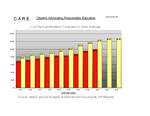 |
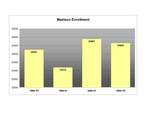 |
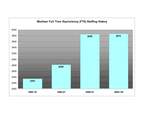 |
| Click to view the charts in further detail | ||
After an eight year absence from analyzing data from the Madison School District, C.A.R.E., Citizens Advocating Responsible Education, has returned to the local scene with updates to the data profiles which it prepared through 1997. Current reports include a Ten Year Profile, 1994 through 2004, of MMSD’s school enrollment, full time equivalency (fte) staffing history, student to staff ratios, annual operating budgets, annual pupil costs compared to the state average, and tax levies in excess of spending caps. The second report is a profile of the same items but in snapshot form in ten year increments since 1980. (300K PDF)
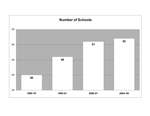 |
 |
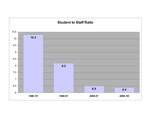 |
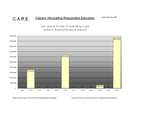 |
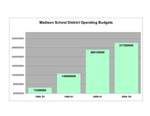 |
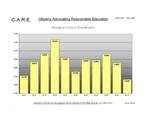 |
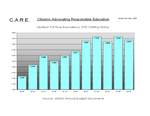 |
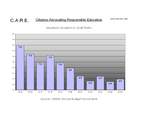 |
Virgil and Sarah Kidd began to study MMSD annual budgets and district profile data after attending their first school board meeting in June of 1990. After a public protest demonstration led by Virgil Kidd in July of 1990 a small group of concerned citizens came together to form the new group known as C.A.R.E., Citizens Advocating Responsible Education. Previous presidents of the feisty citizen group after Virgil Kidd’s initial term were well known community leaders John Alexander and former school board president Nancy Harper.
Sarah Kidd, Virgil Kidd’s widow, has decided to update the data that has been compiled by C.A.R.E. over the past years and make it available to citizens in Madison who value factual data and historical perspective when making important decisions concerning public education.
C.A.R.E. data sources: The 2004-05 Budget & District Profile Book, June 2004, MMSD and DPI Websites and Annual MMSD Budget Documents from the years described.
Contact: careinfo05 at yahoo dot com
I am very concerned that citizens of Madison are pitting themselves against one another. It is frustrating to hear new residents try to interpret data for those of us living it.
In listening to the radio post, I don’t have the same view on decreasing population at Crestwood, Stevens, Muir, Huegel and Chavez. Actually, I have the opposite. This data is probably relavant for 2002-2003 but not for what is being experienced today.
All of these schools have increasing population with existing neighborhood homes being sold to younger families. Private swim pools are increasing in population, which is a good indicator of young families mobility and I know Stevens has maintained 6 Kindergarten classes this year (’04-’05) with a 30% increase in ’03-’04. Their school newsletter stated they were not anticipating the same number of classrooms but as it turns out…they did.
I’ve also grown tired of the whole Allied/Chavez school arguement; Not that I am able to influence your final decision but here is some insight that I have gained over the past few months.
Allied Drive parents, children, community leaders and schools servicing this neighborhood love and express their continued concern about being able to continue attending their current schools. The school board and parent volunteers have visited with Allied families. This information was gathered by going door-to-door and not surprisingly, they are just like all of us who do not want our children to move to a new school or attend a different middle school or high school. This is why Thoreau is mentioned. The parents who attended the Allied Community School Board Meeting on March 10th (to which I attended as well) were adamant that they did not want to leave Thoreau where their children are thriving and doing well. Allied families also feel a community school would limit their child’s experience and are not in favor of a school in their neighborhood.
I believe the Leopold location is ideal considering the land is available for the new building and does not add an additional cost or tax burden on our citizens. I’m unsure where an Allied School would be located as land is not available and would be an additional purchase.
The proximity of an Allied Drive school to Midvale and/or Orchard Ridge is less than 1-2 miles. I would rather a school at Leopold because of location, proximity to southern growth and to alleviate the populations of Chavez and Thoreau, which currently host 111 total students from the Leopold area. (These students are included with the school they attend not with Leopold.) The Leopold community has worked with the school board over the last 4-5 years to understand their neighborhoods, gathering information door-to-door to ensure accurate numbers and projections of population. The Leopold area is host to the largest MMSD boundaries and number of students attending one facility. An Allied Drive school does not take into consideration the growth on south Fish Hatchery and east & west on PD/McKee Road.
If we did build in the Allied community, from which neighborhoods would boundaries be drawn to balance income and racial concerns? (There is a very high low income populous at Huegel, Orchard Ridge, Falk, Leopold and Allied Drive) Where would these children attend middle & high school; the above schools feed into different locations of Toki and Cherokee; Memorial and West? The low-income population within Allied has actually decreased in recent years and increased along Raymond Road where housing complexes are owned by the same individuals as those in Allied Drive.
Allied Drive’s population is very mobile so it is difficult to measure the success of the schools the neighborhood currently attends. As a Crestwood parent, I like smaller class sizes but without the Allied community our SAGE requirements would no longer be met. I also work in a laboratory whose employees are represented by 32 different countries. I would like my children to experience that diversity as they continue to grow, expand their friendships and experience real life challenges. So we need to consider the impact a building would have on existing schools such as Crestwood and Steven’s Elementary.
Besides all the above, the most obvious questions that the board would face if this option were *still* on the table is how other neighborhoods would feel attending an Allied School to balance the population and how safe the surrounding neighborhood would be for children attending.
It is very concerning to me that the board continues to receive personal attacks; accusations that all the options have not been explored. In making a true effort, I’ve discovered this process has been in long range planning for 5-6 years. I only discovered it as new, because their talks didn’t impact my children until the boundary maps were released on the MMSD website. I failed to keep myself abreast of school issues until now, where I hope to continue attending meetings 1x/month in the coming year. I’m greatly disappointed in the Madison media coverage and the inaccuracy of public discussions on this issue.
I forwarn people that anyone can input data and create a chart and references should be provided as to where the data was found. Yes, my view is probably skewed in the sense of how I analyzed the details. I hope everyone continues to do their own research to make an educated vote. This is not a republican vs. democratic issue…its doing what is right for our community and our children.
Continue to express solutions and don’t forget to vote on May 24th!
These historical comparisons would be more informative if they also displayed the percentage of enrollment that had limited English proficiency (LEP/ELL) and also the percentage of economically disadvantaged (eligible for free/reduced lunch). I will give CARE the benefit of the doubt and assume that this selective presentation of data is unintentional, but it really should be corrected.
I’m grateful that Sarah took the time to pull this information together.
I also agree that some context would be helpful. The MMSD should publish data with charts & background information like this – changes over time in sources & uses of funds, infrastructure, curriculum and staffing.
I’m certain there’s a great deal of information behind these changes. It would be great to see it. I favor full transparency – a requirement, in my view, to obtain more funds from the public (via local, state & federal taxes).
The source of the C.A.R.E. data did not copy in the footer when posted. It is the 2004-05 Budget & District Profile Book, June 2004, MMSD and DPI Websites and Annual MMSD Budget Documents from the years described. Regarding enrollments: Crestwood peaked in 1995-96 at 481 and is 390 this year; Elvehjem peaked the same year and now is 411; Huegel peaked at 574 in 1997-98 and currently enrolls 448; Muir peaked in 1993 at 514 and now has 450 students; Stephens peak was 589 in 1998 and currently enrolls445 and,finally, Thoreau peaked in 1994 with 575 and has a current enrollment of 436.
Elvehjem’s peak in 1995-96 was 515. (Sorry, next time I’ll click the “preview” button before posting. I’m a new blogger!)
That probably came across more harshly than I wanted it to. I think it is great that people care enough about public education questions to prepare these documents. Sarah’s efforts in presenting information are commendable.
MMSD has a decent stats page at http://www.madison.k12.wi.us/re/dataprofile.htm. It shows that the percentage of economically disadvantaged students has climbed from 20.3 in 1991 to 37.2 in 2005. LEP/ELL percentages do not seem to be there, but DPI’s WINSS site shows MMSD as having 12.9% LEP/ELL in 2003-2004. Both figures are above the state average and, to me, explain (at least in part) why MMSD’s cost per pupil is above the state average.